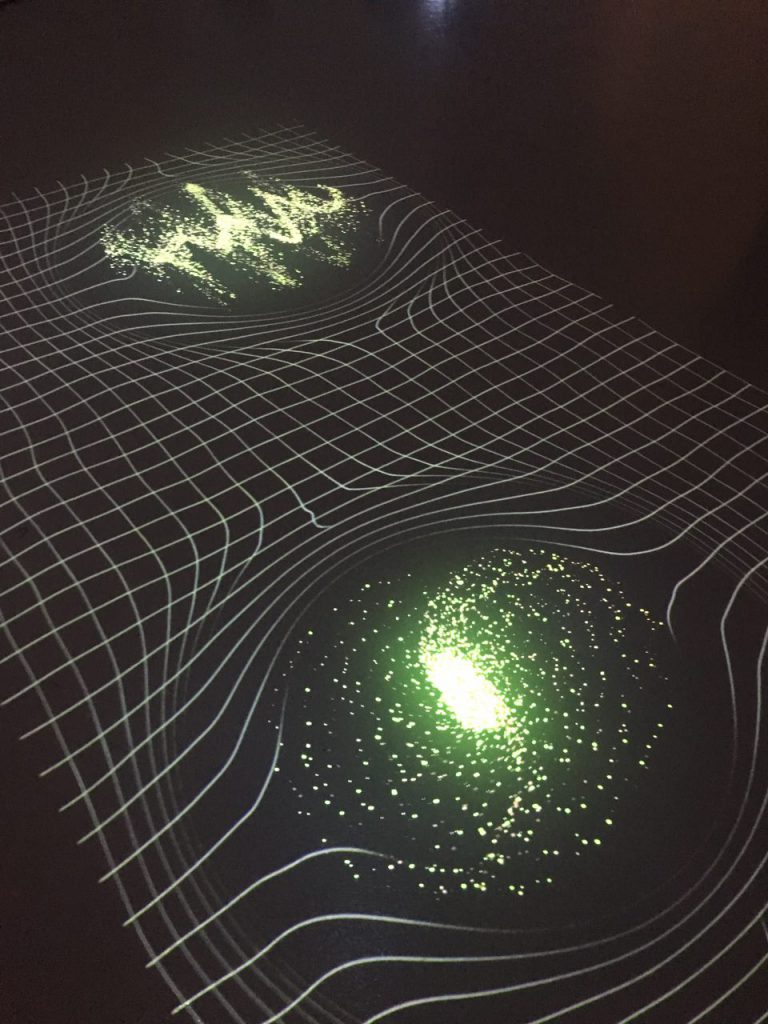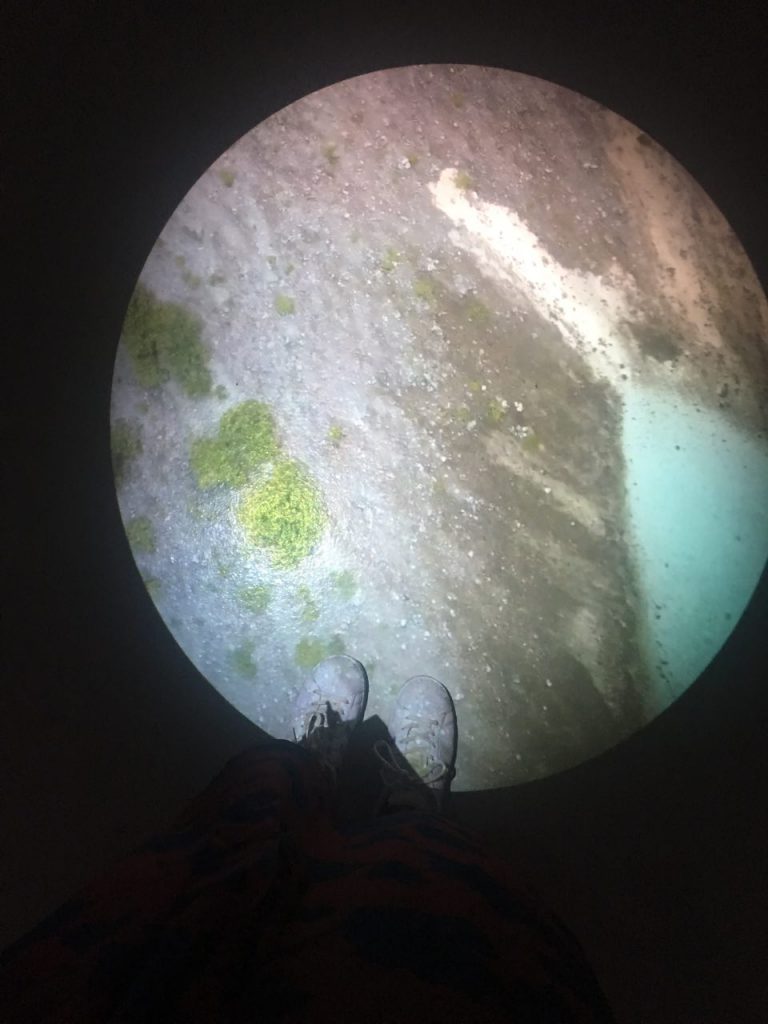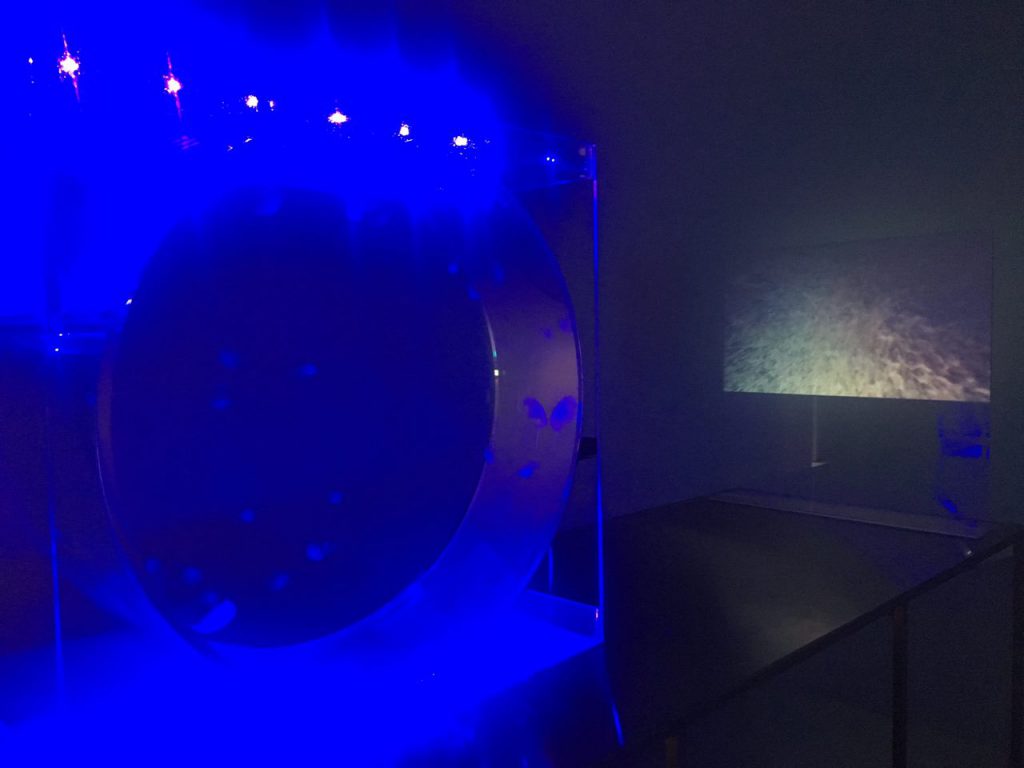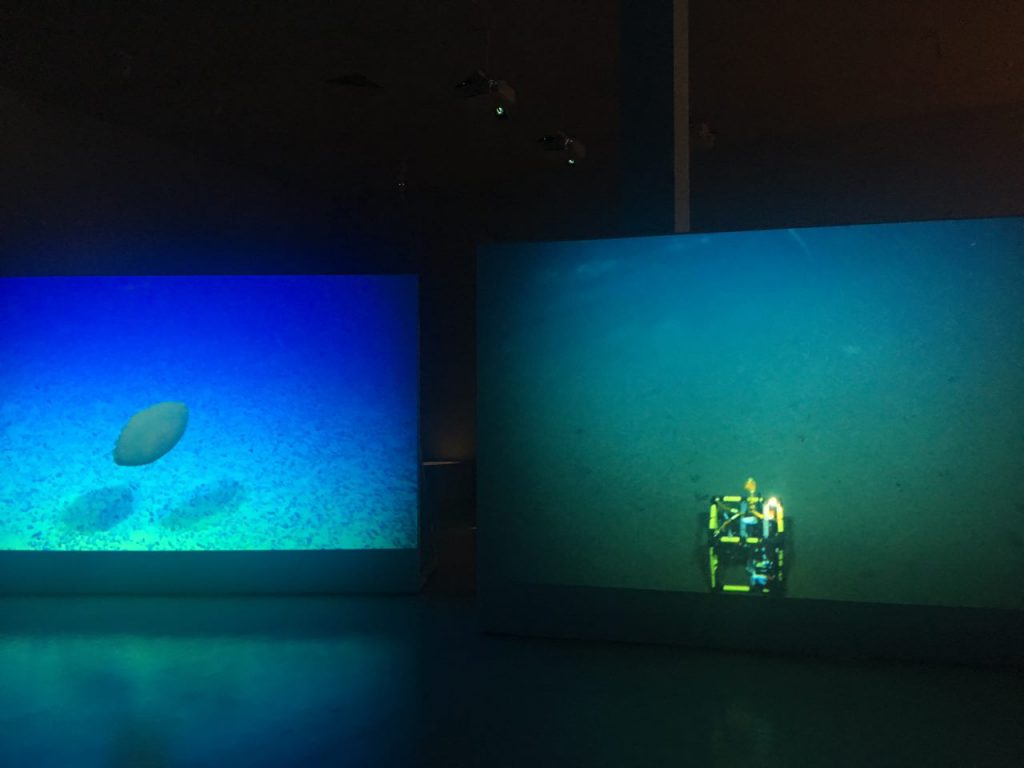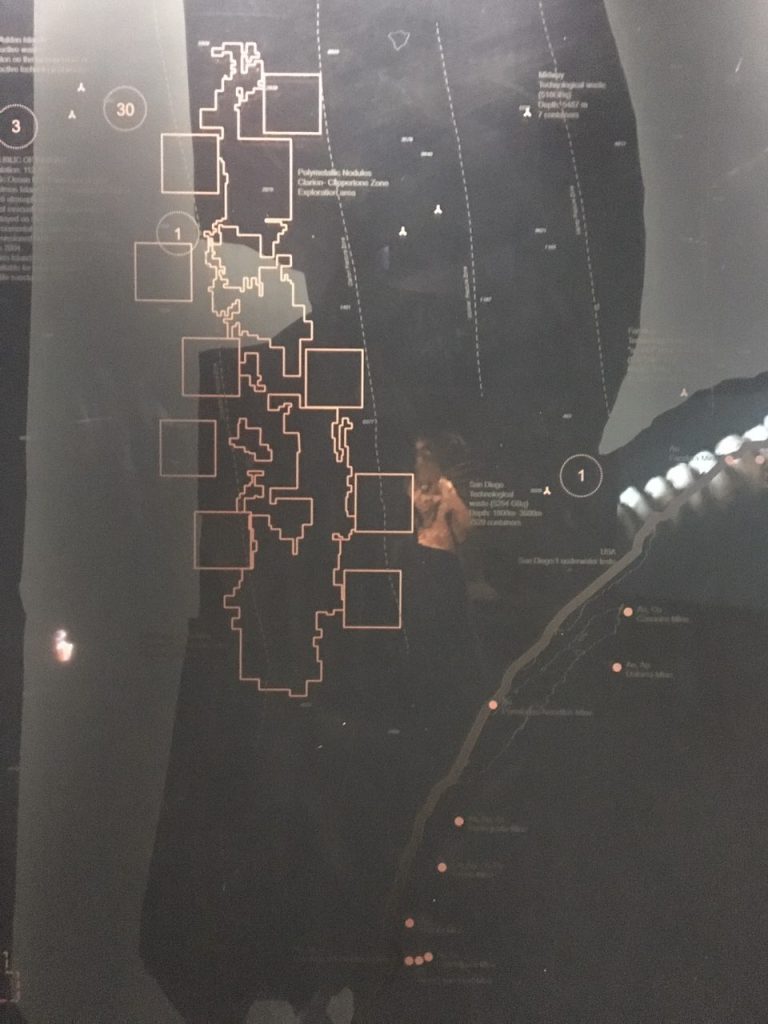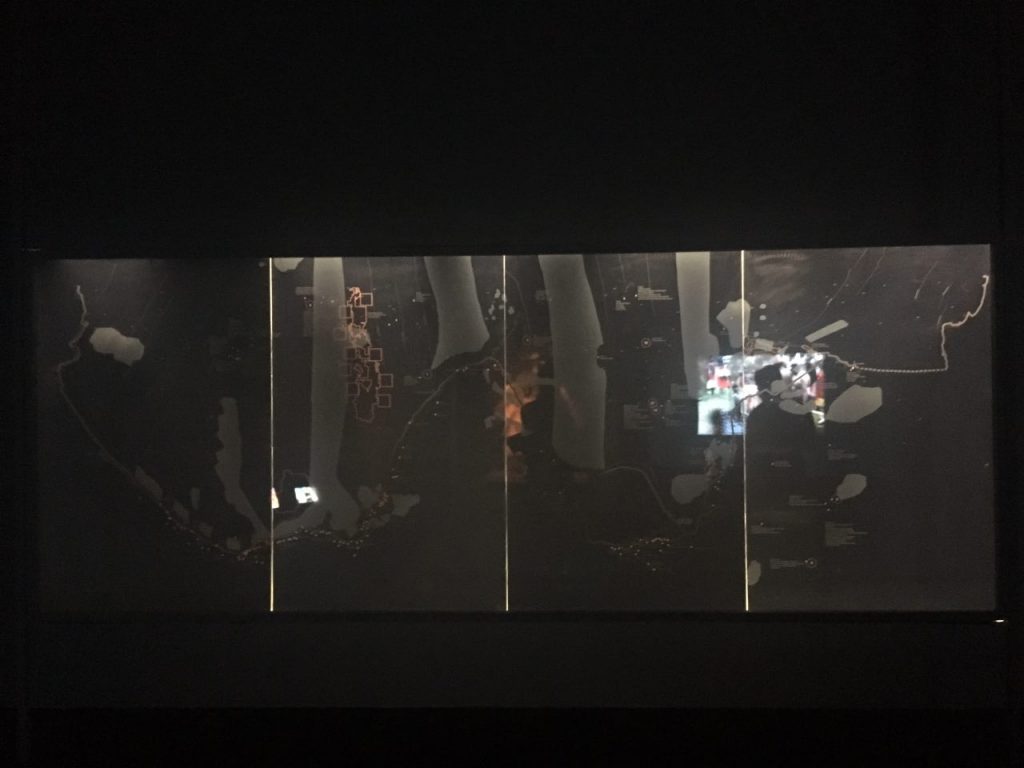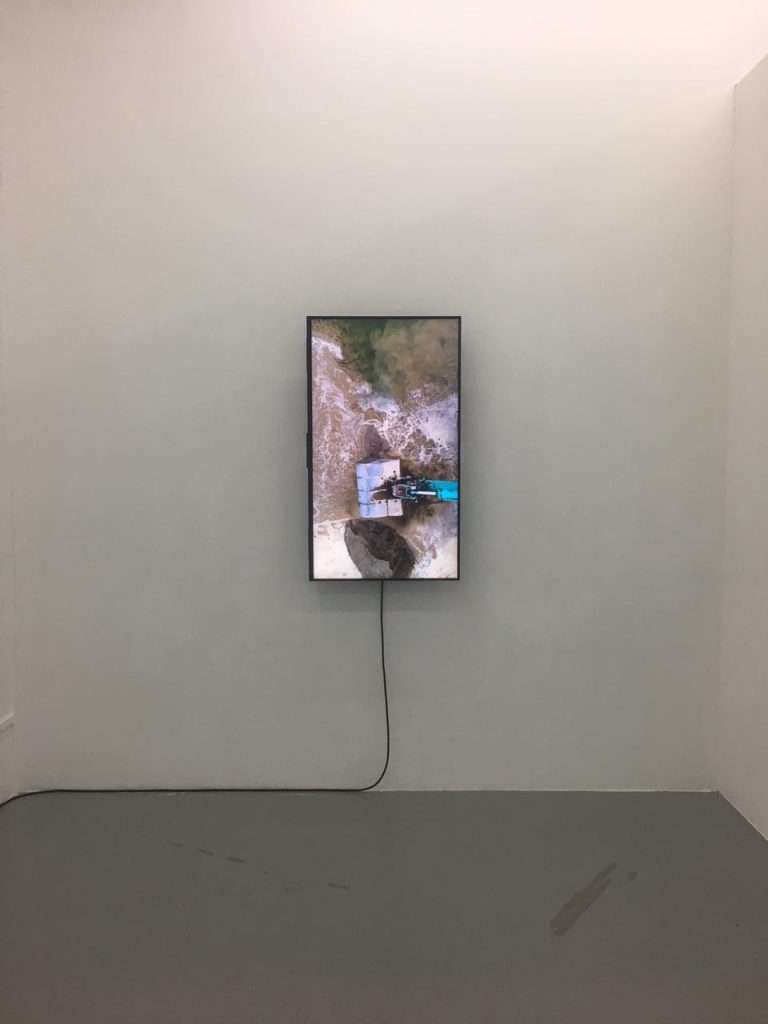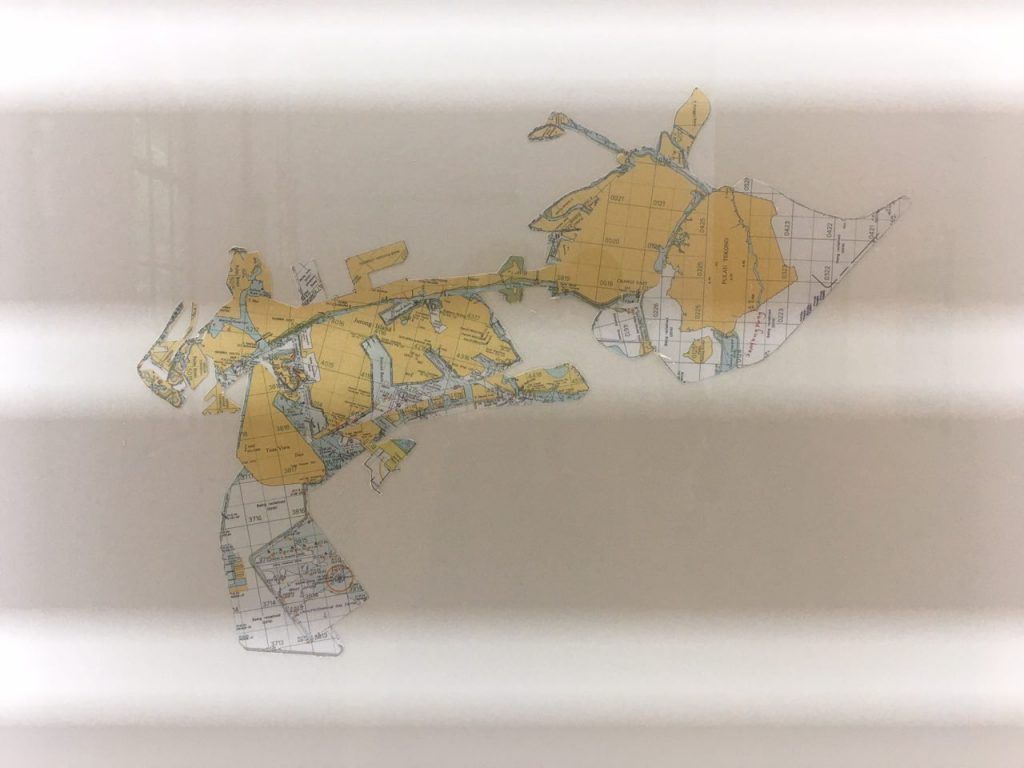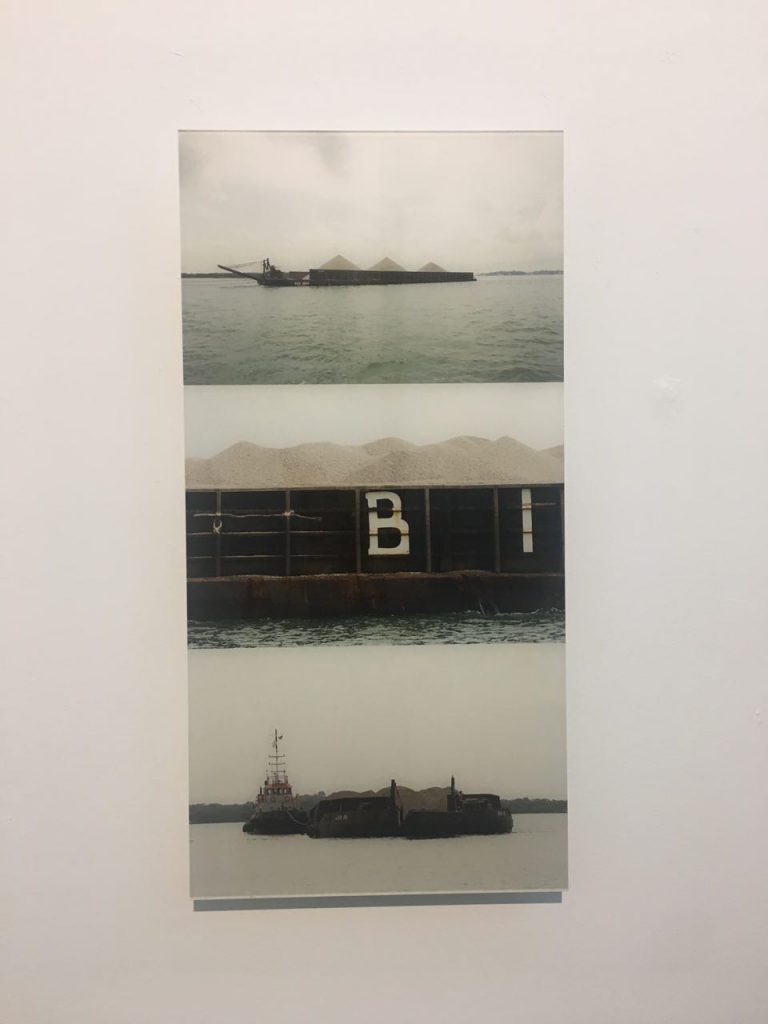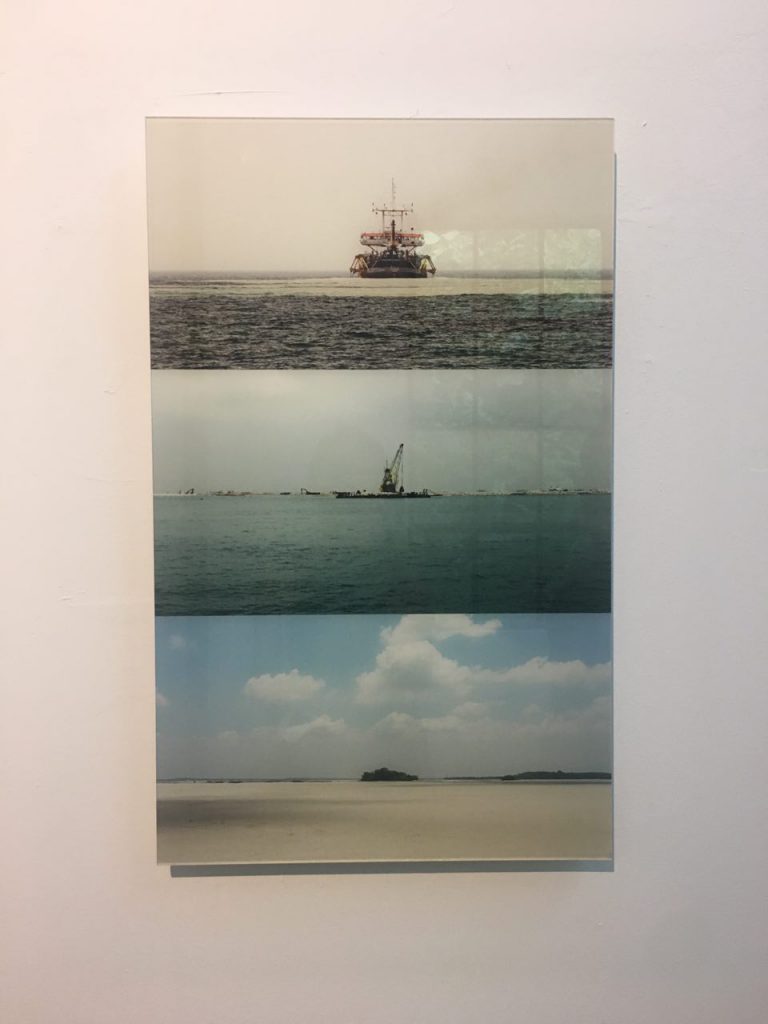Atif Akin
Tepoto Sud Morph Moruroa, 2017 / Multi-Media Installation
Tue Greenfort
Tamoya Obbaya, 2017 / Installation
Armin Linke
Oceans, Dialogues between ocean floor and water column, 2017 / Film
__________________________________________________
Strategy #1: Film/Images Projections
From the 3 artists above, they have used various ways of projections which I thought was interesting and strategic in terms of how they presented their content. For Atif Akin, the projections were on the floor, with different images played which plays with the perception of the viewer by presenting it on the floor than on a wall. The images are panned from drone captured videos to an animated 3d renderings which captured my attention as I do not only see the beautiful video stills but the sciencey part of how scientists look at these areas. As for Tue Greenfort, what caught my attention most was the projected screen that he used. The bottom half of the screen was a transparent acrylic but the part which the video was projected on is actually covered with a sticker that made the acrylic slightly frosted – which also made the acrylic textured. And with that, this allows the projection to be shone onto the screen. Lastly, Armin Linke’s 4 screens projection captures different perspectives of the scientists at work and this allows us, the audience, to see the many viewpoints of their expedition work. Similar to Akin’s work, Linke’s shows how these researchers work but with a different mode of presentation in their content.
__________________________________________________
Nabil Ahmad
Inter-Pacific Ring Tribunal (Interprt), 2016-Ongoing / Diagram printed on acrylic
__________________________________________________
Strategy #2: 2D/Print/Graphic Presentation
Nabil Ahmad’s work was different from most of the works around the exhibition as his execution takes an unconventional turn by using acrylic that is rasterised/cut. The figures and diagrams were simplified using symbols which can be found in the legends table at the side. This allowed me to decipher bits and pieces of the work which I thought was interesting as it creates an interaction and understanding of the work between the artist and viewer.
This is especially relevant to me as I come from a viscomm background and I could see how the artist is able to present his content of the same topic in another form of expression as compared to the videos/photos that is mostly seen around the exhibition.
__________________________________________________
Charles Lim
Sea State Exhibition
__________________________________________________
Strategy #3: Space – Screens & Prints
Charles Lim’s exhibition allowed me to reflect on the visual space used and following the first 2 strategies of using projections/screens and prints. His works are placed mostly one on each white wall, with a space solely dedicated to it. This allowed me, as the viewer, to fully focus on the screen/print itself instead of being overwhelmed with the things around. With the empty space around, this allows me to concentrate better on the many moving images as well.
There were 3 screens in a long portrait format style, with varying perspectives of the content shown. For one, is just the view of the sea and waves, in zoomed in or out, or another the sand being pumped out onto the seafloor. I liked how he cut his various frames in different angles to fit the long frame and I would stare at the screen for a good 10mins to figure out the whole picture of the video.
